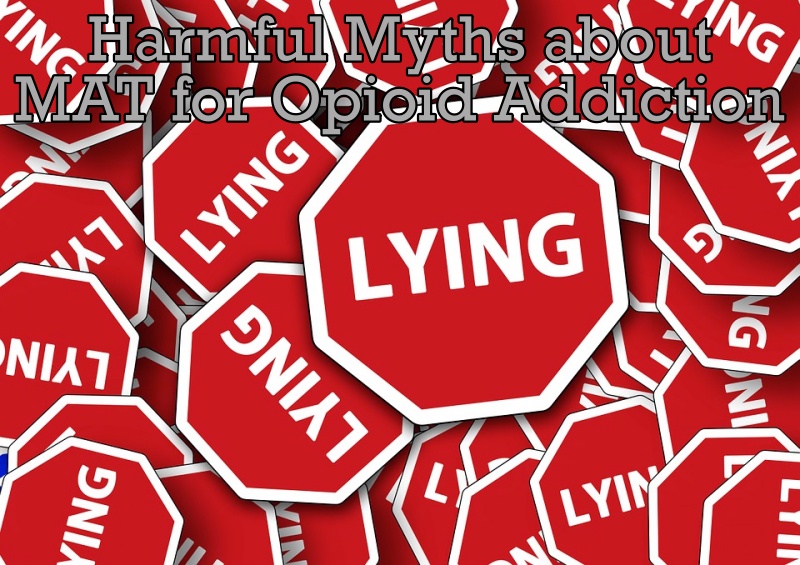Myths Surrounding MAT for Opioid Addiction & Recovery
There are many treatment options available to address an addiction to opioids, but medication-assisted treatment (MAT) is considered the top tier. Despite decades of proven evidence backing its efficiency and relative safety of MAT to combat opioid addiction, there are still many harmful myths surrounding this treatment method. If you’re considering an MAT program at a local treatment facility, you’ve probably heard conflicting opinions. Silver Linings Recovery Center exams common MAT myths to give you better insight on how you can begin recovery through medication-assisted treatment.
How does MAT Work?
Before examining the dangerous myths surrounding MAT, it is important to have a strong grasp on how and why this treatment works. The end goal is to wean patients off misusing opioid drugs, both prescription and illicit, while avoiding withdrawal symptoms. Medications most used in MAT programs are methadone and buprenorphine. Both compounds work by interacting with opioid receptors in the brain. But, unlike heroin or prescription painkillers, methadone and buprenorphine do not create the feeling of euphoria that contributes to uncontrollable use and addictive behavior. When taken as prescribed, these medications fulfill the brain’s craving for opioids while allowing the individual to function and participate in treatment.
10 Common Medication-Assisted Treatment Myths for Opioid Addiction
MAT Trades One Addiction for Another.
This is one of the most common MAT myths and is often used to shame participants of the treatment program. People have the mistaken belief that taking a medication every day means you’re addicted to it.
The truth is participants are not getting high. They are eliminating their drug use, benefiting from the medication for mental and emotional stability that is necessary to complete other aspects of recovery.
MAT is only for Short-Term Treatment.
MAT does not usually fit into the common 30- or 90-day treatment programs and actually works better when used as a long-term treatment. MAT program participants can stay on methadone or buprenorphine as long as it keeps working. Before treatment, it is recommended you talk with your doctor how long they envision you taking the medication.
My Addiction isn’t Severe Enough for MAT.
All forms of opioids from pain pills prescribed by a doctor to black tar heroin are highly addictive and change the chemicals in the brain. MAT is suitable for anyone with an opioid use disorder, whether it is categorized as mild, moderate or severe.
MAT Increases Overdose Risk for Patients.
This is one of the most harmful and incorrect misconceptions regarding MAT. In combination with therapy, medication-assisted treatment is the most effective treatment for opioid addiction. The goal is to eliminate illicit opioid use that could lead to an overdose. Both methadone and buprenorphine are effective in achieving that.
MAT Delays & Disrupts True Recovery.
There is a common, dangerous misconception that MAT is a crutch and prevents people from achieving “true” recovery. The truth is, when a person is in the grip of an addiction, a person cannot function properly; their only focus is obtaining and using drugs.
MAT removes the fear of withdrawal, helping you achieve stability and re-enter society.
MAT is Worse than Abstinence.
This philosophy is directly related to the idea that substituting methadone or buprenorphine for heroin or pain pills is just switching one addiction for another. Many addiction treatment programs operate on the idea that the only way to achieve “true” recovery is complete abstinence from all illicit or medication substances.
While complete abstinence from opioids and MAT medications is an admirable goal, it is one we’d like to achieve in the long run. The short-term goal is to break the cycle of addiction, achieve stability and re-enter society.
Most Insurance Companies don’t Cover MAT.
Don’t assume that MAT is not covered under your insurance plan. While it may not be fully covered or there are some restrictions, the introduction of the Affordable Care Act requires most insurers to cover addiction treatment, including medication-assisted treatment.
MAT is too Expensive.
Even without insurance coverage, methadone or buprenorphine MAT is still a cost-effective treatment option for many people. According to NIDA, the estimated cost of treatment is:
- Methadone: $126 per week, including medication, integrated therapy and support services
- Buprenorphine: $115 per week, including medication and weekly visits to the certified opioid treatment program 2x per week.
Pregnant Women can’t Receive MAT.
MAT is very safe for pregnant women and new mothers who are breastfeeding. The benefits of MAT to the baby are significant compared to the risks of continued heroin use.
Cold Turkey is Better than MAT.
Withdrawals from opioids are excruciating and sometimes life-threatening. Further, it does absolutely nothing to address drug cravings. The center component of MAT is to satisfy the brain’s need for opioids and quiet the urges to abuse drugs.
Silver Linings Recovery Center is the leading treatment center for opioids, drug and alcohol addiction in the Philadelphia tri-state area, offering two locations in Bucks County, PA and Mercer County, NJ. Get Help Now: 855-960-3769.
